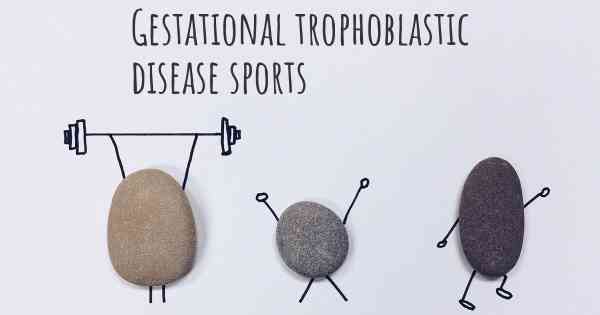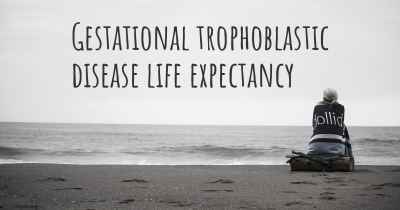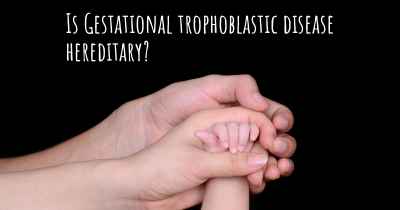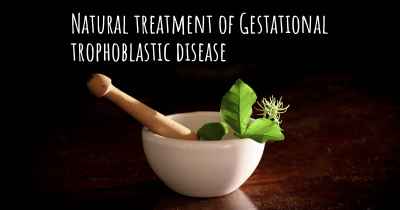Is it advisable to do exercise when affected by Gestational trophoblastic disease? Which activities would you suggest and how intense should they be?
See if it is advisable for people with Gestational trophoblastic disease to practice sports and which ones are the most recommended if you have Gestational trophoblastic disease

Gestational trophoblastic disease (GTD) is a rare group of pregnancy-related tumors that develop in the cells that would normally form the placenta. It includes conditions such as hydatidiform mole, invasive mole, choriocarcinoma, and placental site trophoblastic tumor. If you have been diagnosed with GTD, it is important to consult with your healthcare provider before starting or continuing any exercise routine.
Exercise can have numerous benefits for overall health and well-being, but it is crucial to consider the specific circumstances of GTD. The intensity and type of exercise recommended may vary depending on the stage and severity of the disease, as well as individual factors such as overall health, fitness level, and any complications that may have arisen.
Low-impact exercises are generally considered safe and beneficial for individuals with GTD. These activities are gentle on the joints and minimize the risk of injury. Some suitable low-impact exercises include:
- Walking: Walking is a great way to stay active during pregnancy. Start with shorter distances and gradually increase the duration and intensity as tolerated.
- Swimming: Swimming and water aerobics are excellent options as they provide a low-impact cardiovascular workout while supporting the body's weight.
- Prenatal yoga: Prenatal yoga classes can help improve flexibility, strength, and relaxation. Look for classes specifically designed for pregnant women.
- Stationary cycling: Using a stationary bike allows for a controlled and low-impact workout. Adjust the resistance and duration based on your comfort level.
Intensity is an important consideration when exercising with GTD. It is generally recommended to aim for moderate-intensity exercise, which means you should be able to carry on a conversation while exercising without feeling overly breathless. However, this may vary depending on individual circumstances, so it is crucial to consult with your healthcare provider for personalized recommendations.
It is important to listen to your body and pay attention to any warning signs or symptoms during exercise. If you experience dizziness, shortness of breath, vaginal bleeding, or any other concerning symptoms, stop exercising and seek medical attention immediately.
Exercise precautions should be taken into account when dealing with GTD. These precautions may include:
- Avoiding high-impact activities: Activities that involve jumping, bouncing, or sudden changes in direction should be avoided to minimize the risk of injury or complications.
- Avoiding heavy lifting: It is generally recommended to avoid heavy lifting or strenuous activities that put excessive strain on the body.
- Staying hydrated: Drink plenty of water before, during, and after exercise to prevent dehydration.
- Wearing appropriate clothing and footwear: Choose comfortable, supportive shoes and loose-fitting clothing that allows for ease of movement.
- Monitoring your heart rate: Keep track of your heart rate during exercise and ensure it stays within a safe range. Your healthcare provider can provide guidance on target heart rate zones.
Regular prenatal check-ups are essential when exercising with GTD. Your healthcare provider will monitor your condition and provide guidance on exercise recommendations based on your specific circumstances.
In conclusion, exercise can be beneficial for individuals affected by GTD, but it is crucial to consult with your healthcare provider before starting or continuing any exercise routine. Low-impact exercises such as walking, swimming, prenatal yoga, and stationary cycling are generally considered safe options. Aim for moderate-intensity exercise, but listen to your body and adjust the intensity as needed. Take necessary precautions, stay hydrated, and monitor your heart rate. Regular prenatal check-ups are essential to ensure your exercise routine aligns with your specific circumstances. Remember, your healthcare provider is the best resource for personalized advice and guidance.
Posted Mar 7, 2017 by Hazwani 1050
Posted Sep 26, 2017 by Cindy 2120
Posted Oct 7, 2017 by Jessica 900
Posted Oct 8, 2017 by Melody 2263
Posted Nov 6, 2017 by MCHill 3050
Posted Oct 18, 2017 by Luciene Scarabelli 1000
Posted Oct 18, 2017 by Hemille 1000
Posted Oct 18, 2017 by Meire 1000








